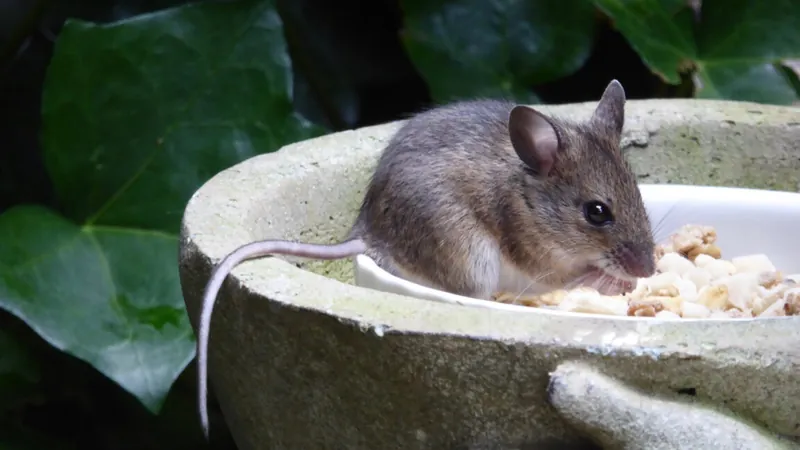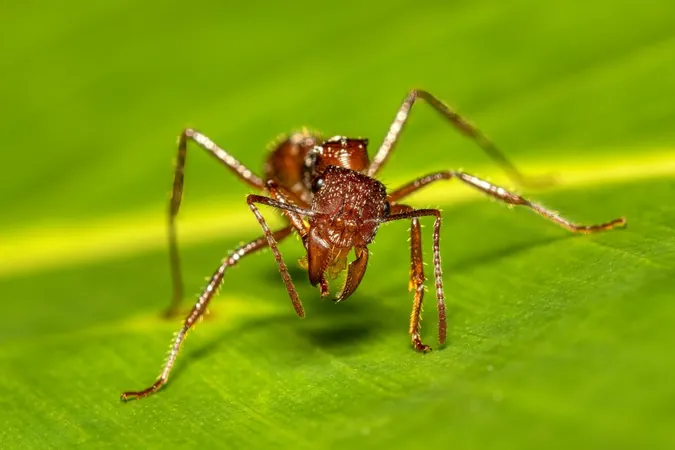
Unleashing the Power of Regeneration: Scientists Revive Healing in Mice!
2025-06-26
Author: Ling
Unlocking the Secrets of Nature's Regenerators
In the animal kingdom, regeneration is a breathtaking ability seen in creatures like lizards, starfish, and the remarkable axolotl— a salamander known for its astonishing capacity to regrow limbs, organs, and even parts of its brain! However, mammals have largely lost this power, with only a select few retaining limited regenerative capabilities.
A Groundbreaking Discovery
Researchers at the National Institute of Biological Sciences in Beijing, led by Wei Wang, are on a mission to understand how these abilities dwindled through evolution. Their groundbreaking study has illuminated a critical gene, previously dormant in mice, which, when activated, restored some regenerative functions. Yes, you heard it right—mice are now on the path to regeneration!
The Experiment: A Tale of Two Species
Wang's team embarked on a fascinating comparative study of wound healing in rabbits and mice, using the ear pinna as their testing ground. By inflicting small wounds, they tracked healing processes in both species, observing a striking contrast. While rabbits showed promising signs of tissue regrowth, mice experienced a complete halt in healing after the initial phase.
A Key Player: The Aldh1a2 Gene
Delving deeper, they identified the Aldh1a2 gene as a game-changer. This gene is responsible for producing retinoic acid, a vital compound for cell growth and differentiation. Notably, the gene was highly active in rabbits, promoting ear tissue regeneration, yet remained inactive in mice.
The Magic Ingredient: Retinoic Acid
To bridge this gap, researchers injected retinoic acid directly into the wounded ears of mice. Astonishingly, this led to complete regeneration of ear pinna tissues, much like in rabbits! Previous attempts had failed, but Wang theorizes that insufficient dosage and duration were to blame.
Engineer the Future: Revitalized Genes
Following their success, the team explored enhancing the Aldh1a2 gene in mice using rabbit DNA segments, successfully enabling mice to naturally produce retinoic acid for regeneration.
A Long Road Ahead Despite the Exciting Progress
Yet, while this breakthrough sparks hope, the journey toward regeneration miracles akin to the axolotl is just beginning. Wang's research is merely a slice of a much larger puzzle, and it's still unclear whether these findings apply universally across all organs.
Understanding the Evolution of Regeneration
Wang’s team is eager to uncover why regeneration capabilities diminished in mammals historically. What ecological advantages lie behind this loss? While answers remain elusive, the quest for restoring regeneration is bound to unravel remarkable truths about evolution and cellular biology.




 Brasil (PT)
Brasil (PT)
 Canada (EN)
Canada (EN)
 Chile (ES)
Chile (ES)
 Česko (CS)
Česko (CS)
 대한민국 (KO)
대한민국 (KO)
 España (ES)
España (ES)
 France (FR)
France (FR)
 Hong Kong (EN)
Hong Kong (EN)
 Italia (IT)
Italia (IT)
 日本 (JA)
日本 (JA)
 Magyarország (HU)
Magyarország (HU)
 Norge (NO)
Norge (NO)
 Polska (PL)
Polska (PL)
 Schweiz (DE)
Schweiz (DE)
 Singapore (EN)
Singapore (EN)
 Sverige (SV)
Sverige (SV)
 Suomi (FI)
Suomi (FI)
 Türkiye (TR)
Türkiye (TR)
 الإمارات العربية المتحدة (AR)
الإمارات العربية المتحدة (AR)